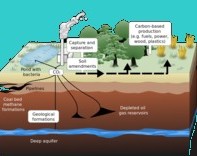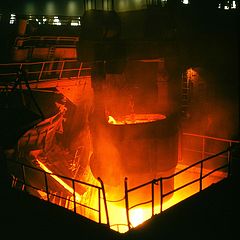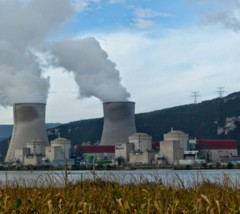We can sum this up in a word:
Hydrogen
According to 'Scotty from Marketing', and his mate 'Twiggy' Forrest, hydrogen is the, newly discovered panacea, to all our environmental woes:
The Hon Scott Morrison MP - Prime Minister of Australia"Australia is on the pathway to net zero. Our goal is to get there as soon as we possibly can, through technology that enables and transforms our industries, not taxes that eliminate them and the jobs and livelihoods they support and create, especially in our regions. From: Transcript, Remarks, Leaders Summit on Climate, 22 Apr 2021 |
Why didn't we think of hydrogen before?
Well of course we did, a number of times. Jules Verne in 1874; J B S Haldane in 1923; General Motors in 1966; Daimler AG in 2006; Honda in 2008.
Trouble is that converting 'green' electricity to hydrogen and then back to electricity, as in an electric vehicle, loses more energy, and thus money, than simply using a battery to store the electricity. It's not commercially or environmentally competitive as it wastes energy.
The alternative, that's actually being promoted by Scotty, uses fossil fuels to make hydrogen to make electricity.
But it turns out that this too is less efficient than burning the fossil fuels to make heat to make electricity or using the fossil fuels directly to power a vehicle or aircraft. It produces more carbon dioxide for the same usable energy than our present, oil based, technology.

Source: Wikimedia Commons
Carbon Capture
Scotty's solution - we'll just capture the the carbon dioxide and bury it.
Well Scotty, if that's the magic technology, why aren't we already doing that with the carbon dioxide from coal burning power stations?
The answer is: the nature of reality. In this universe when one fully burns carbon, a carbon atom, (atomic weight 12), combines with two oxygen atoms (combined atomic weight 32). So the new molecule, carbon dioxide, now weighs 44 (3.7 times more). Its volume grows even more, because even when compressed to a solid (dry ice), carbon dioxide is only about half as dense as carbon (1.5 g/cc : 2.26 g/cc).
This means that each cubic metre of solid carbon (for example as a component of coal) extracted from underground weighs 2.26 tonnes. Yet the resulting carbon dioxide now weighs 8.3 tonnes. Depending on its temperature the volume is now vast. If instead of letting it loose into the atmosphere we capture it and compress it to a solid (dry ice) its volume is now 12.4 cubic metres. We've gone from one coal train to bring it in to twelve coal trains to take the resulting carbon dioxide out. Similar calculations apply to the carbon component in oil and natural gas.
Thus burying the carbon is a much larger undertaking than digging it up.
Theoretically it's possible, but the energy required to capture; compress; transport; and bury the gas makes it totally impractical and uneconomic. Further, no existing underground storage, like a depleted oilwell, is large enough to accommodate a lifetime of carbon dioxide output from even a modest sized coal or oil burning power-plant. The same would apply to a commercial-scale fossil based hydrogen plant. And the sort of reverse 'fracking', pumping the gas into underground strata, proposed by some advocates, (see the picture above) would be incredibly environmentally destructive; uneconomically costly; and potentially extremely dangerous to people and animals living in the vicinity.

Source: Wikimedia Commons
Green Steel
Twiggy doesn't want to make electricity. He wants to make hydrogen to reduce iron ore (hematite Fe2O3 and/or magnetite Fe3O4) to pure(ish) iron (Fe), by stripping out the oxygen. If the temperature is high enough, the hydrogen bonds with the oxygen to make water, leaving the iron metal behind.
The iron can be sent directly to an electric steel furnace to make steel - eliminating those messy 18th century coke ovens and blast furnaces and 20th century Basic Oxygen furnaces.
This has been done on a laboratory scale for many decades. When I was employed by British Steel at the British Iron and Steel Research Association Laboratories (BISRA) in Battersea - in the 1970's - we were already talking about the 'hydrogen economy' and many teams around the world had already demonstrated hydrogen's technical viability as a reducing agent (For example: Turkdogan, E.T., Vinters, J.V. Gaseous reduction of iron oxides: Part I. Reduction of hematite in hydrogen. - at the Fundamental Research Laboratory, U.S. Steel Corporation, Research Center, Monrocville, Pa in 1971).
The direct reduction of iron ores (DRI), using 'producer gas' (a mixture of carbon monoxide and hydrogen) from coal or natural gas has been competitive in some situations for decades. Today around 7% of global crude steel production is from DRI and the International Energy Agency expects this to rise to 11% by 2050. In this process the producer gas is derived from the fossil fuels and carbon monoxide is the principal reducing gas, with the hydrogen taking a secondary role.
Used on its own, considerably more hydrogen is required for the same level of reduction. When derived from electricity, via electrolysis of water, this volume of 'green' hydrogen is far too expensive and is uncompetitive with conventional DRI.
The vast majority of global crude steel production comes from even more conventional integrated steelworks (see the picture above). These employ a modern version of age old blast furnace iron making. This process was pioneered by the Chinese around 500 BCE and introduced to Europe, along the Silk Road, to Switzerland, Germany and Sweden around 1200 CE where it replaced the older 'bloomery' method used for centuries in Europe. This iron had to be worked by a blacksmith for many hours to remove impurities and convert it into malleable and very highly prized steel - for premium swords like Excalibur or sickles and ploughshares.
For the first time, in the 19th century pig iron from a blast furnace was refined in bulk, to wrought iron, in an open hearth 'puddling furnace'; and then to steel using the Bessemer process. This facilitated the acceleration of the industrial revolution; modern bridges; railways; ships; high rise buildings; and tall towers in Paris. In the mid 20th century, with the development of tonnage oxygen plants, basic oxygen steelmaking became the predominant iron converting technology and remains so today.
China now makes over half the steel manufactured in the world. This is because China is also the largest steel market, with over half the worlds: bridge; rail; tunnel; high-rise building construction; and car manufacturing. And that's before they even get to facilitating their exports of white goods and electronics products.
Most Australian iron ore goes to China. So they buy a lot of Twiggy's iron ore and a lot of Australian metallurgical coking coal to reduce it.
Judging by the the Fortescue website it seems that Twiggy would like to add some value in Australia.
Nuclear Steelmaking
The electrolysis of water is typically accomplished within cells consisting of an anode (+) to which oxygen is attracted and a cathode (-) to which hydrogen is attracted. The electrodes are typically separated by a membrane (polymer or ceramic) that is transparent to hydrogen ions (protons) but not to oxygen. To assist in separating these proton from the source water, an electrolyte, typically of alkaline salts is employed and the water temperature is raised to around boiling point.
The energy thus expended in separating the hydrogen, that will later be recovered when the hydrogen is reunited with oxygen, comes mainly from the electrical current across the cell but also from the external heat provided. Electrical efficiencies of up to 80% are claimed for some, still experimental, cells.
Back in the 1970's at BISRA a forward-looking paper proposed that both the electricity and heat, needed to improve the efficiency of electrolysis, could be provided by a nuclear power-plant. The same reactor would produce steam to generate the required electricity. An associated electric arc furnace would melt the hydrogen-reduced-iron into steel.
Such a steelmaking plant is not presently economic but could compete with conventional fossil-fuel based steelmaking if there was a sufficiently high tax on carbon. Needless to say, such a tax would need to apply in China; as well as in other steel producing countries.
But here in nuclear-free Australia Twiggy can't do that. He'll have to stick to good old fossil fuels if he wants to make steel or to have an awful lot of Chinese solar panels and/or wind turbines.

3600 MW Cruas Meysse Nuclear Power Plant
near Mirmande, Southern France
My photograph - Sept 2014
But here's an idea: for $20 billion why not just replace all those coal, oil and gas burning furnaces, used to heat water to generate electricity, with half a dozen state-of-the-art nuclear power stations; À la française?
Six power plants like the four reactor one near Mermand in France (pictured above) would replace Australia's entire thermal electricity generation capacity. France has eighteen such plants.
Now those electric cars and fast trains make sense.
China, that has pledged to do something effective about climate and their dreadful air quality, has 49 active reactors already operational, typically around 1000 MW each, 18 under construction and a further 83 planned. I wonder why they don't need so much Australian steaming coal?